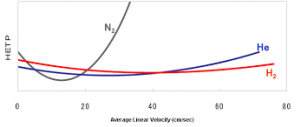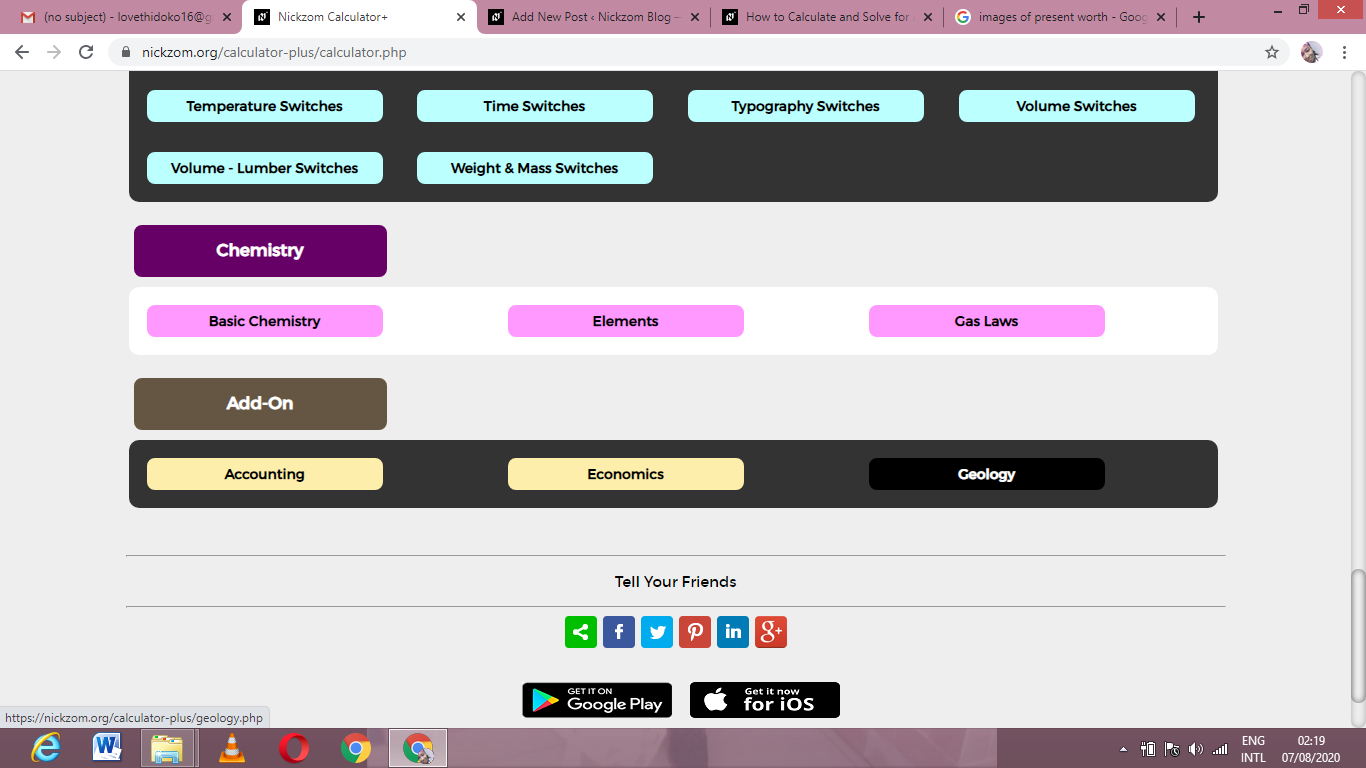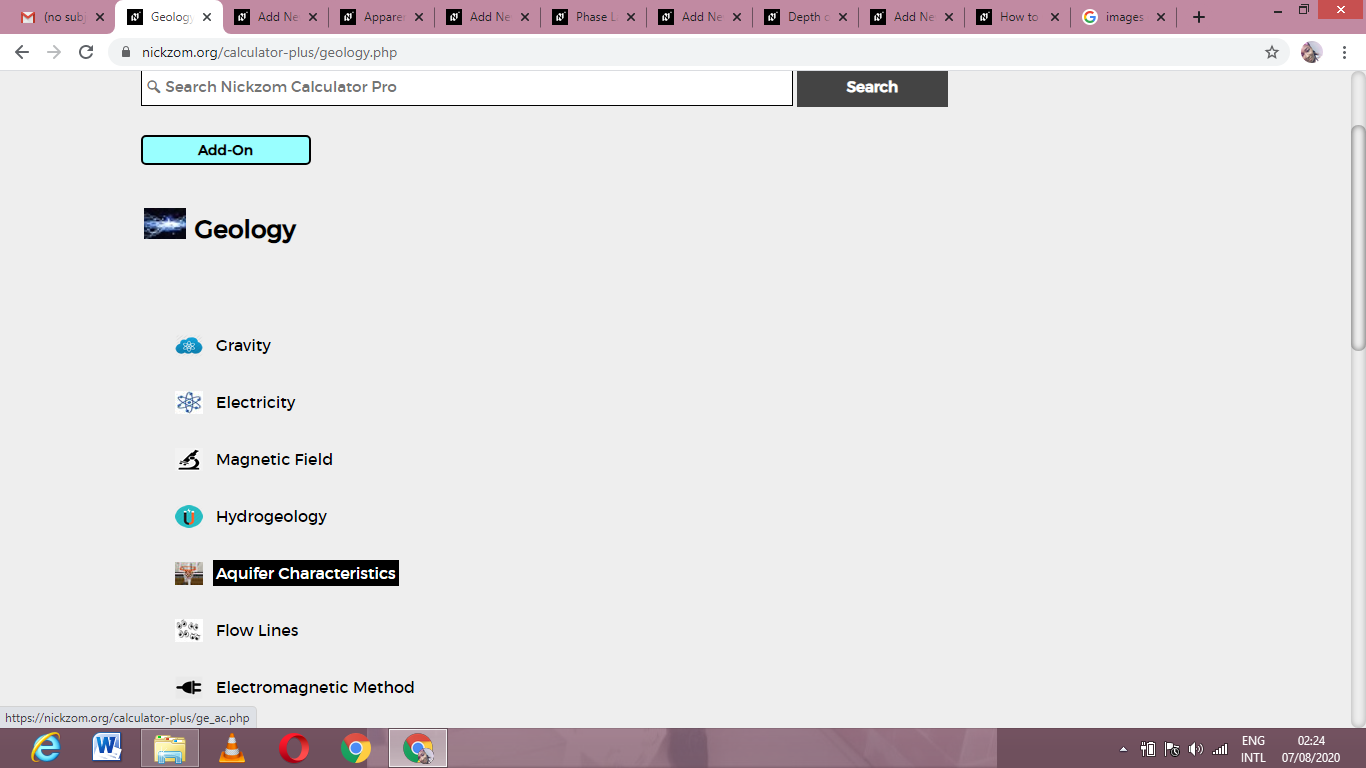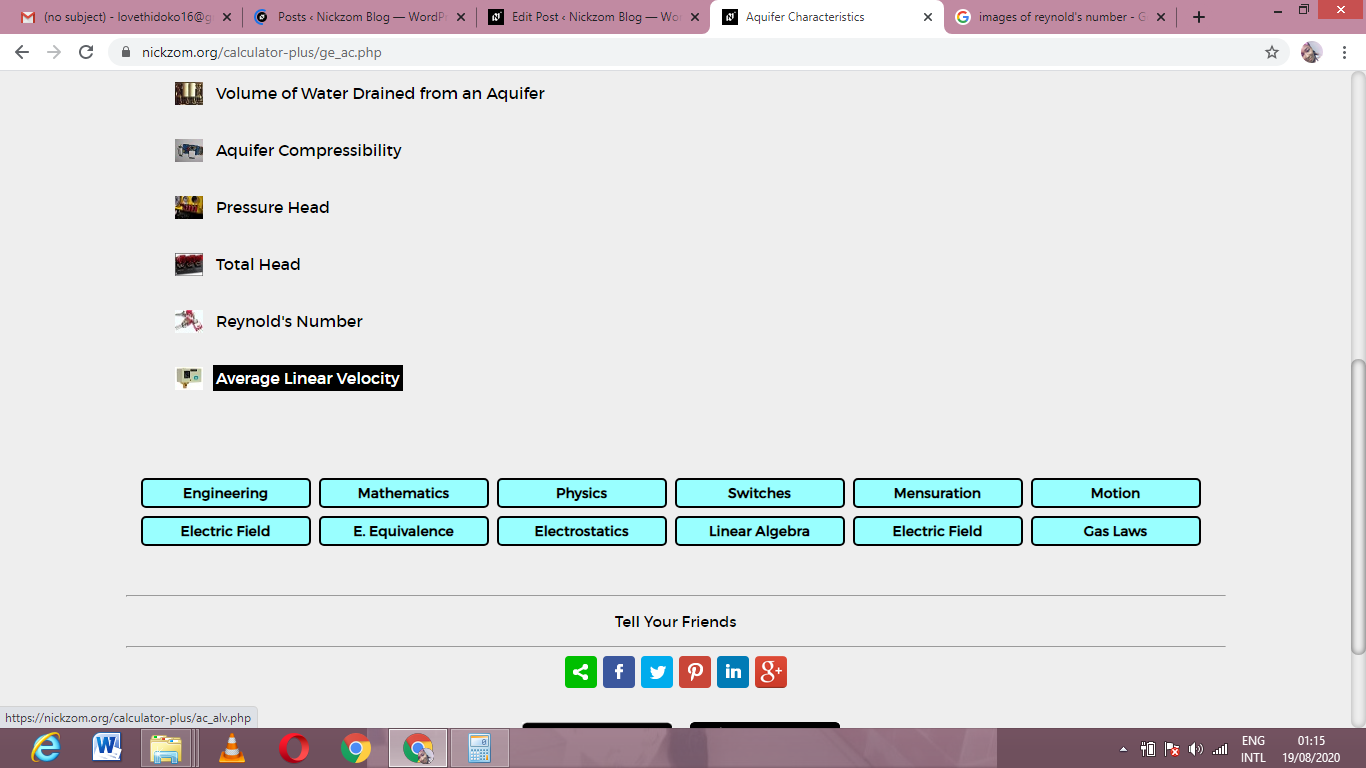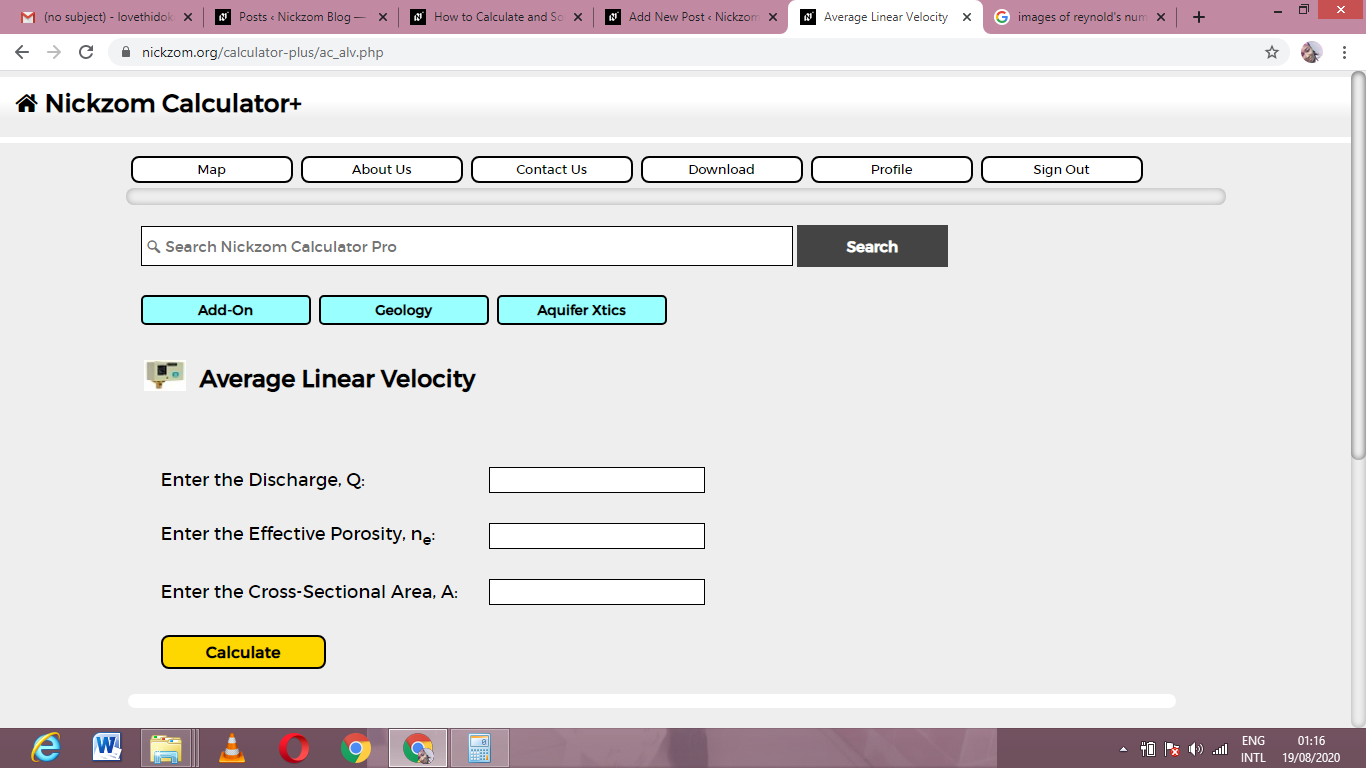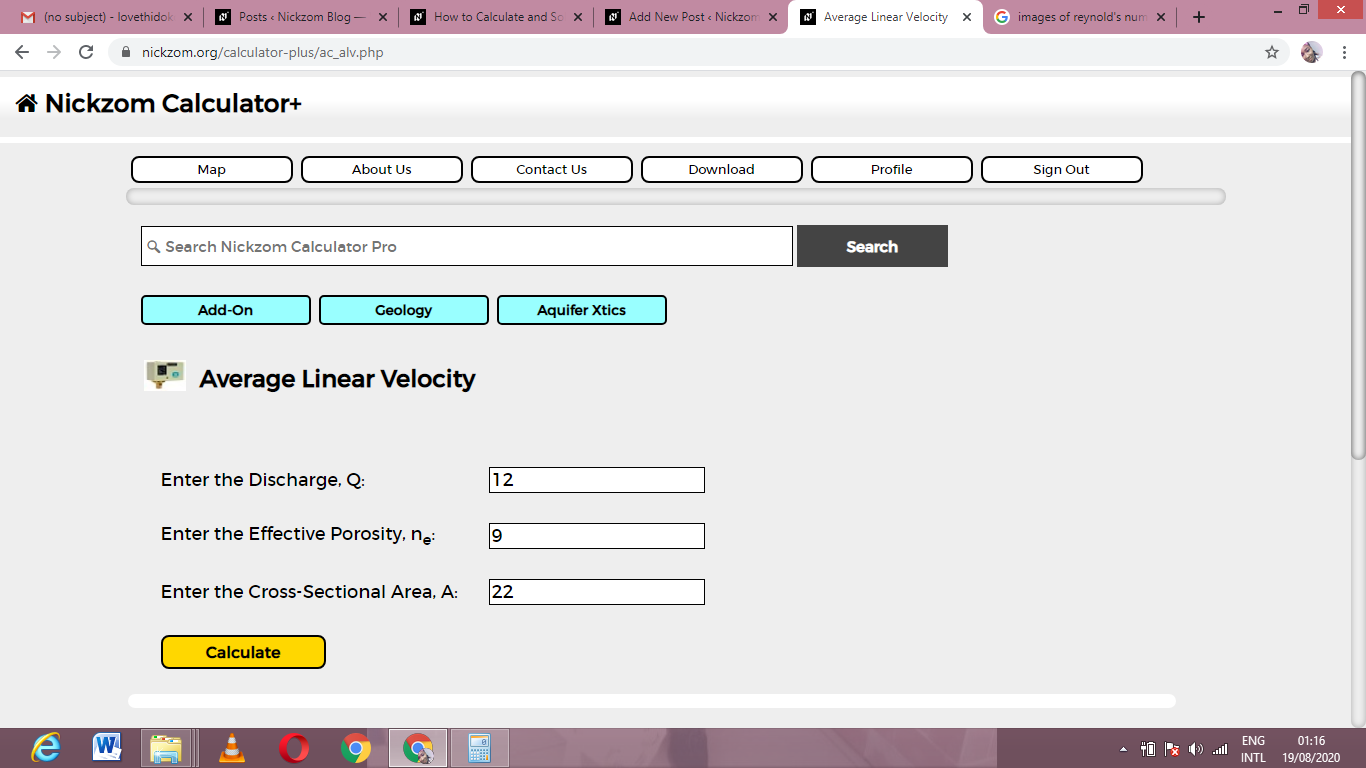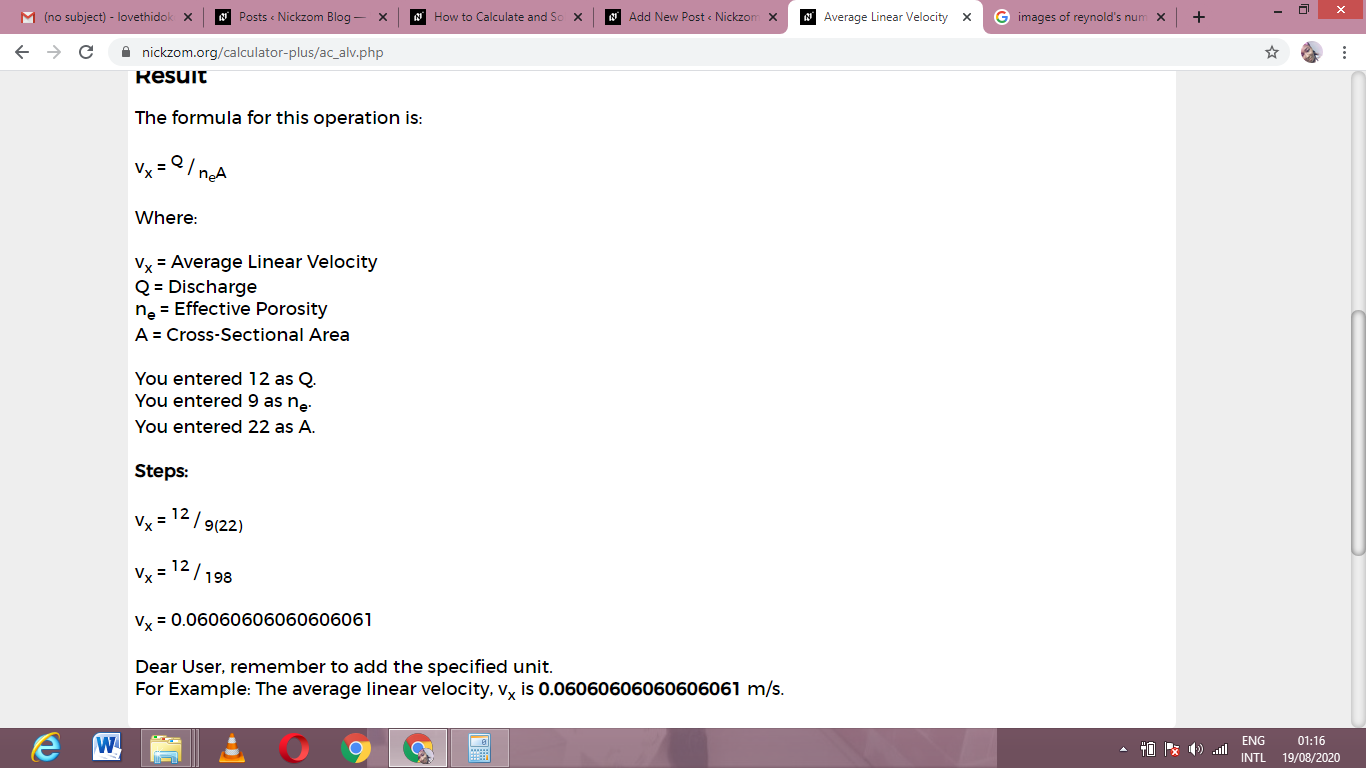The image above represents average linear velocity. Three essential parameters are needed to calculate average linear velocity: discharge (Q), effective porosity (ne), and cross-sectional area (A).
The formula for calculating average linear velocity:
vx = Q / neA
Where:
vx = Average Linear Velocity
Q = Discharge
ne = Effective Porosity
A = Cross-Sectional Area
Let’s solve an example;
Find the average linear velocity when the discharge is 12, the effective porosity is 9, and the cross-sectional area is 22.
This implies that;
Q = Discharge = 12
ne = Effective Porosity = 9
A = Cross-Sectional Area = 22
vx = Q / neA
So, vx = 12 / 9(22)
vx = 12 / 198
vx = 0.060
Therefore, the average linear velocity is 0.060 m/s.
Calculating the Discharge when the Average Linear Velocity, the Effective Porosity and the Cross-Sectional Area are Given
Q = vx x ne A
Where;
Q = Discharge
vx = Average Linear Velocity
ne = Effective Porosity
A = Cross-Sectional Area
Let’s solve an example;
Find the discharge when the average linear velocity is 22, the effective pororsity is 10 and the cross-sectional area is 14.
This implies that;
vx = Average Linear Velocity = 22
ne = Effective Porosity = 10
A = Cross-Sectional Area = 14
That is, Q = vx x ne A
Q = 22 x 10 x 14
Q = 3080
Therefore, the discharge is 3080.
Read more: How to Calculate and Solve for Total Volume Discharge per Unit Width of Aquifer | Flow Lines
Calculating the Effective Porosity when the Average Linear Velocity, the Discharge and the Cross-Sectional Area are Given
ne = Q / vx x A
Where;
ne = Effective Porosity
vx = Average Linear Velocity
Q = Discharge
A = Cross-Sectional Area
Let’s solve an example;
Find the effective porosity when the average linear velocity is 21, the discharge is 11 and the cross-sectional area is 8.
This implies that;
vx = Average Linear Velocity = 21
Q = Discharge = 11
A = Cross-Sectional Area = 8
ne = Q / vx x A
ne = 11 / 21 x 8
Then, ne = 11 / 168
ne = 0.0654
Therefore, the effective porosity is 0.0654.
Calculating the Cross-Sectional Area when the Average Linear Velocity, the Discharge and the Effective Porosity are Given
A = Q / vx x ne
Where;
Master Calculations Instantly
Unlock solutions for math, physics, engineering, and chemistry problem with step-by-step clarity. No internet required. Just knowledge at your fingertips, anytime, anywhere.
A = Cross-Sectional Area
vx = Average Linear Velocity
Q = Discharge
ne = Effective Porosity
Let’s solve an example;
Find the cross-sectional area when the average linear velocity is 5, the discharge is 34 and the effective porosity is 4.
This implies that;
vx = Average Linear Velocity = 5
Q = Discharge = 34
ne = Effective Porosity = 4
A = Q / vx x ne
That is, A = 34 / 5 x 4
A = 34 / 20
A = 1.7
Therefore, the Cross-Sectional Area is 1.7.
How to Calculate Average Linear Velocity | Aquifer Characteristics Using Nickzom Calculator
Nickzom Calculator – The Calculator Encyclopedia is capable of calculating the average linear velocity.
To get the answer and workings of the average linear velocity using the
Nickzom Calculator – The Calculator Encyclopedia. First, you need to obtain the app.
You can get this app via any of these means:
Web – https://www.nickzom.org/calculator-plus
To get access to the professional version via web, you need to register and subscribe for NGN 2,000 per annum to have utter access to all functionalities.
You can also try the demo version via https://www.nickzom.org/calculator
Android (Paid) – https://play.google.com/store/apps/details?id=org.nickzom.nickzomcalculator
Android (Free) – https://play.google.com/store/apps/details?id=com.nickzom.nickzomcalculator
Apple (Paid) – https://itunes.apple.com/us/app/nickzom-calculator/id1331162702?mt=8
Once, you have obtained the calculator encyclopedia app, proceed to the Calculator Map, then click on Geology under Add-on.
Now, Click on Aquifer Characteristics under Geology
Now, Click on Average Linear Velocity under Aquifer Characteristics
The screenshot below displays the page or activity to enter your values, to get the answer for the average linear velocity according to the respective parameters which are the Discharge (Q), Effective Porosity (ne) and Cross-Sectional Area (A).
Now, enter the values appropriately and accordingly for the parameters as required by the Discharge (Q) is 12, Effective Porosity (ne) is 9 and Cross-Sectional Area (A) is 22.
Finally, Click on Calculate
As you can see from the screenshot above, Nickzom Calculator– The Calculator Encyclopedia solves for the average linear velocity and presents the formula, workings and steps too.
